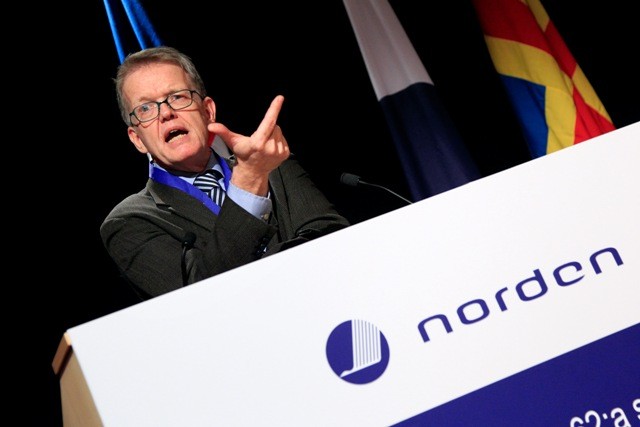|
If the five Nordic countries were to unite and Russia failed to amend its approach, the future for the three Baltic States between them could look darker than if the idea of the federation came to nothing, says University of Tartu political scientist Heiko Pääbo. Should the idea come to fruition, he says, it is inevitable that the Baltic States become little more than a dot on the map between them. Pääbo says the risk could be mitigated by the major financial interests of the Nordic countries in the region. "Although having said that, we've seen with Nord Stream just how easily financial interests can be bought and compensated." In response to the Postimees debate, the political scientist asked why those five countries alone should unite as opposed to also including the Baltic States. Pääbo explained that the image of the Baltic States among ordinary Scandinavians tends to be a restricted and rather negative one: "We might be fine partners to them, but we're not seen as equals." Jakob Sjövall, a Master's student of political science at the University of Stockholm, published an opinion piece on the idea of the United Nordic Federation in Postimees on 1 November. Last autumn, during the annual Nordic Council session, the well-known Swedish columnist Gunnar Wetterberg sparked lively debate in the Nordic region, as well as in other countries on the Baltic Sea, by proposing that Finland, Sweden, Denmark, Norway and Iceland unite to form one federation. He justified the notion by saying that in the light of globalisation it would be one of the most effective ways for the region to compete with the major powers. Wetterberg had developed the idea further by the time of this year's Nordic Council session, publishing it as the Nordic Council of Ministers' and the Nordic Council's Yearbook 2010. Politicians, academics and top business figures discussed the book in Reykjavik on 1 November 2010. |
||
|
related links:
|
||
Estonian academics see both opportunity and danger in idea of the United Nordic Federation
|
The idea of a United Nordic Federation 20 to 30 years down the line, which author Gunnar Wetterberg has labelled a 'realistic utopia', has earned a great deal of attention in Estonia. The online version of the Postimees newspaper dedicated pages to it and surveyed scientists in Estonia about the potential impact of such a federation on the Baltic States. "If Estonia was sidelined, it could become truly marginalised," said Käkönen. "In which case it would be left outside the Copenhagen-Helsinki axis looking in." At the same time, the professor feels that it is more than possible that the United Nordic Federation would not only include Finland, Sweden, Denmark, Norway and Iceland, but also the Baltic States. "That said, if you think about developments after the Cold War, the picture is a little more pessimistic," he said. "The Nordic countries weren't particularly interested in integrating the Baltic States into the Nordic Council, after all, but instead set up the Council of the Baltic Sea States." |

 Tallinn could form part of one of Northern Europe's main regions of growth, stretching from Copenhagen through Stockholm to Helsinki and the Estonian capital, says Jyrki Käkönen, professor of International Relations at Tallinn University. Speaking to Estonia's biggest daily newspaper Postimees, Käkönen calls this axis the 'Nordic Blue Banana'.
Tallinn could form part of one of Northern Europe's main regions of growth, stretching from Copenhagen through Stockholm to Helsinki and the Estonian capital, says Jyrki Käkönen, professor of International Relations at Tallinn University. Speaking to Estonia's biggest daily newspaper Postimees, Käkönen calls this axis the 'Nordic Blue Banana'.